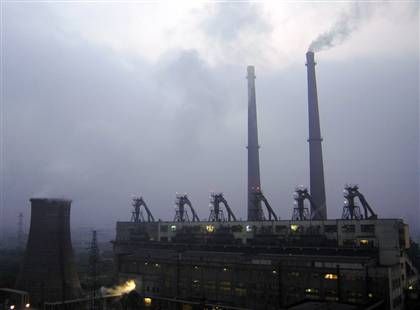Is China’s alternative energy search too late?
Despite China's heavy investment in alternative energy sources, a new study suggests that the country could be the main contributor to an impending rise in global temperatures.


Despite China's heavy investment in alternative energy sources, a new study suggests that the country could be the main contributor to an impending rise in global temperatures.
China’s sulphur emissions are blamed for the steady rise in global warming over the past decade, which looks set to lead to a dramatic temperature rise in the not to distant future.
The study, in the Proceedings of the National Academy of Sciences (PNAS), believes that sulphur emissions from coal-power stations in China are blocking sunlight from reaching earth, cooling the surface of the planet.
The change of the sun’s cycles from the El Nino to the La Nina weather system in the South Atlantic will cause temperatures to remain artificially low. However, scientists warn that this effect will be short-lived, as once the sulphur pollution is cleaned up and the change in the sun’s 11-year cycle is complete, the full warming effect of China’s coal emissions will be realised.
Alternative energies, such as solar and wind power, has boomed in recent years, yet China still remains the world’s largest coal producer and polluter. China, however, is striving to seek an alternative to fossil fuels and is now investing heavily within the biomass industry.
This aggressive approach to new development is encouraging in terms of the country moving away from its dependence on coal energy. However, its dependence on coal is far from being eradicated. According to the Guardian, China’s coal consumption has risen by a further 30% since 2007, and is still responsible for 70% of the country’s annual energy consumption.
Last year, the Chinese government announced plans to cut the country's reliance on coal to 63% by 2015. The five-year plan will see the country adopt a series of energy policies, and increase its use of ethanol based fuel to three million tons by 2015.
In a strategy report, by the Chinese Academy of Engineering, it is claimed that China has the capability to have twice the amount of hydropower, and three and a half times the amount of wind power capacity for the potential capacity of biomass energy. .jpg)
Tsinghai University’s chemical engineering professor Xing Xinhui told Clean Technica, “ While China has built a number of biomass energy projects since the beginning of the last five-year period (spanning 2006-2010), the country still lags far behind other countries in terms of biomass energy investments and has not yet made any breakthrough in biomass energy technology.
"As a result, it behooves the central government to provide additional support for the industry by increasing its investment in research and development of biomass energy technologies, so as to speed up the development of the industry,” Xing Xinhui concluded.
China has the potential to augment a substantial biomass resource from waste and residue stemming from its huge agricultural and forestry industries. Currently, China produces more than 5 million tons of annual grain, generating a staggering 700 million tons of straw in the process. Added to these organic materials, including poultry manure and industrial waste, the potential for biomass development is colossal.
Non-grain plants used in biomass energy conversion can be grown on marginal land, which China has plenty, making biomass development an appealing economic proposition. It is because of this that a host of energy firms have begun to invest in the biomass industry in the Asian country. Foreign firms such as BP and BASF have joined Chinese firms including Sinopec and CNPC in investing directly into the sector. The country has also announced plans to develop large biomass production in the southwest and northwest of the country.
Image 01: Treehugger
Image 02: Pure3d | Flickr






